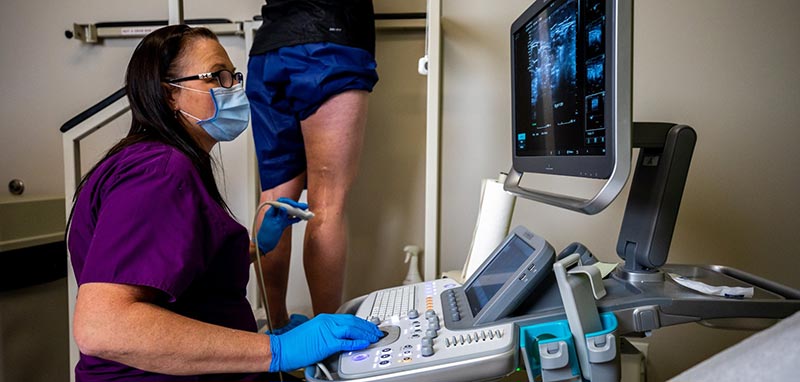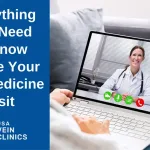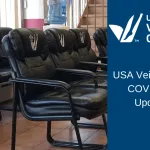
There is a high probability that your struggles with vein issues have landed you on this blog. While you are experiencing symptoms pointing towards vein disease, it is hard for you to determine when the right time is to visit a vein specialist. Your veins play a crucial role in your body, and the pain and other symptoms should not be taken lightly.
Without the ability to function correctly, your veins cannot perform their biological duties in your body.
When is It Time to See a Vein Specialist?
1. Your legs feel weak at the end of the day or after standing for a while.
Though it might not seem unusual for your legs to feel weak after standing for a long time, but it is definitely a matter of concern. This weakness can be an early sign of vein deterioration in your legs. However, some people witness occasional discomfort while others may experience chronic pain which interferes with their daily routine.
Elevating your legs is a great way to relieve this weak, heavy feeling. But if you are experiencing pain, something is indeed amiss, and this is the number one sign you should see a vein specialist.
2. You have dry, itchy skin or a spotted rash near your ankle.
Skin issues such as dryness, itchiness, or a rash may be a sign you have vein problems that have been left untreated. The symptoms you see on your skin may result from the high blood pressure levels in your damaged veins.
If your vein problems are left untreated, the flaky skin or unsightly rash could transform into something much worse become something much worse: a venous leg ulcer. You’ll want to nip this problem in the bud before it reaches the point of an ulcer. If it does, you will be at a higher risk of needing a more intense treatment process.
3. Your leg pain is making your daily life difficult.
Just because you have leg pain doesn’t mean you have vein issues; however, varicose veins can cause leg pain, particularly symptoms that include aching and throbbing. The more you go about your daily activities with varicose veins, the more the pain tends to increase.
In order to find out the cause for your leg pain, you’ll need to schedule an appointment with a specialist to determine whether this could be due to damaged veins. The specialist will find the source of your pain and treat it accordingly. If the pain is mild and veins don’t need treatment, you may just go home with some compression stockings.
4. You’re pregnant for the second time, and your first pregnancy caused vein issues.
Changes in hormones are one of the leading causes of varicose veins today, and one of the times that hormones go through the most significant shift is during pregnancy. Pregnancy increases the blood flow to support and nourish the baby. However, a result of that blood increasing, is a woman’s veins could enlarge,t This added pressure on the growing uterus could lead to varicose veins. So if you struggled with vein problems during your first pregnancy, chances are that the problems will return and worsen with your second pregnancy.
To keep your veins from getting too damaged during pregnancy, you’ll want to visit a vein specialist to determine a treatment plan that works for you.
5. You develop leg ulcers.
These are just about as terrible as they sound. If your vein problems are left untreated, you risk developing leg ulcers, particularly around the calf and ankle areas. Leg ulcers can also result from diabetes, so you will want to see a vein doctor who can run the necessary tests to determine the source of the ulcers. From there, proper treatment can be established before things can worsen.
6. Your veins turn blue and purple; or bulge.
If you see your veins changing color or bulging, seeing a vein doctor is a good idea. Veins turning blue or purple, as well as swelling and irritation, can cause varicose veins to bulge. When they reach this point, your veins will develop a blood clot, restricting blood from flowing through the vein.
Leaving this untreated condition could lead to Deep Vein Thrombosis (DVT).
7.One of your legs swells and the swelling in your legs is gone in the morning.
There could be several reasons that your legs swell. However, varicose veins almost always cause swelling. If this swelling is happening on just one leg and only happens after you’ve been awake and moving for a while, chances are good that the swelling results from venous insufficiency. But to know for sure requires a trip to your vein doctor.
8. You have a tender lump in your leg.
If you spot a tender lump, scheduling an appointment with your local vein doctor right away is always a good idea. The consultation with the specialist will give you a clear picture of the issue at hand and what ein treatment is best for you.
Schedule an Appointment
Rather than playing the guessing game and delaying the process, schedule an appointment today to get your vein issues under control in a timely manner.
Schedule an initial consultation online with USA Vein Clinics to check your veins and determine a treatment. As the largest andwell established vein treatment center in the country, you can rely on us to get your vein issues under control.
Interested in reading more about varicose veins? Explore our collection of varicose vein topics.
- Top 6 Questions to Ask Your Vein Doctor
- Q&A With Vein Doctor: Answers To Your Questions About Treatment
- How to Choose a Vein Doctor?
- When to be concerned about your varicose veins?
- What to Expect During Your Vein Ablation Procedure
- What to Expect After Varicose Vein Surgery?
- 5 Steps to Ensure Your Vein Procedure Runs Smoothly
- Vein Procedure Prep: 3 Things to Bring With You on Day of Treatment
Medically Reviewed By:
Dr. Yan Katsnelson is a philanthropist, business owner, and highly skilled cardiac surgeon. He is the Founder and CEO of USA Vein Clinics, which is part of USA Clinics Group, the parent company of USA Fibroid Centers, USA Vascular Centers, and USA Oncology Centers, with more than 100 facilities nationwide. Dr. Yan has established himself as a strong advocate for accessibility and affordability of the most advanced medical care close to home. His mission is to create a positive experience for each patient with compassionate, personalized, and expert care.






